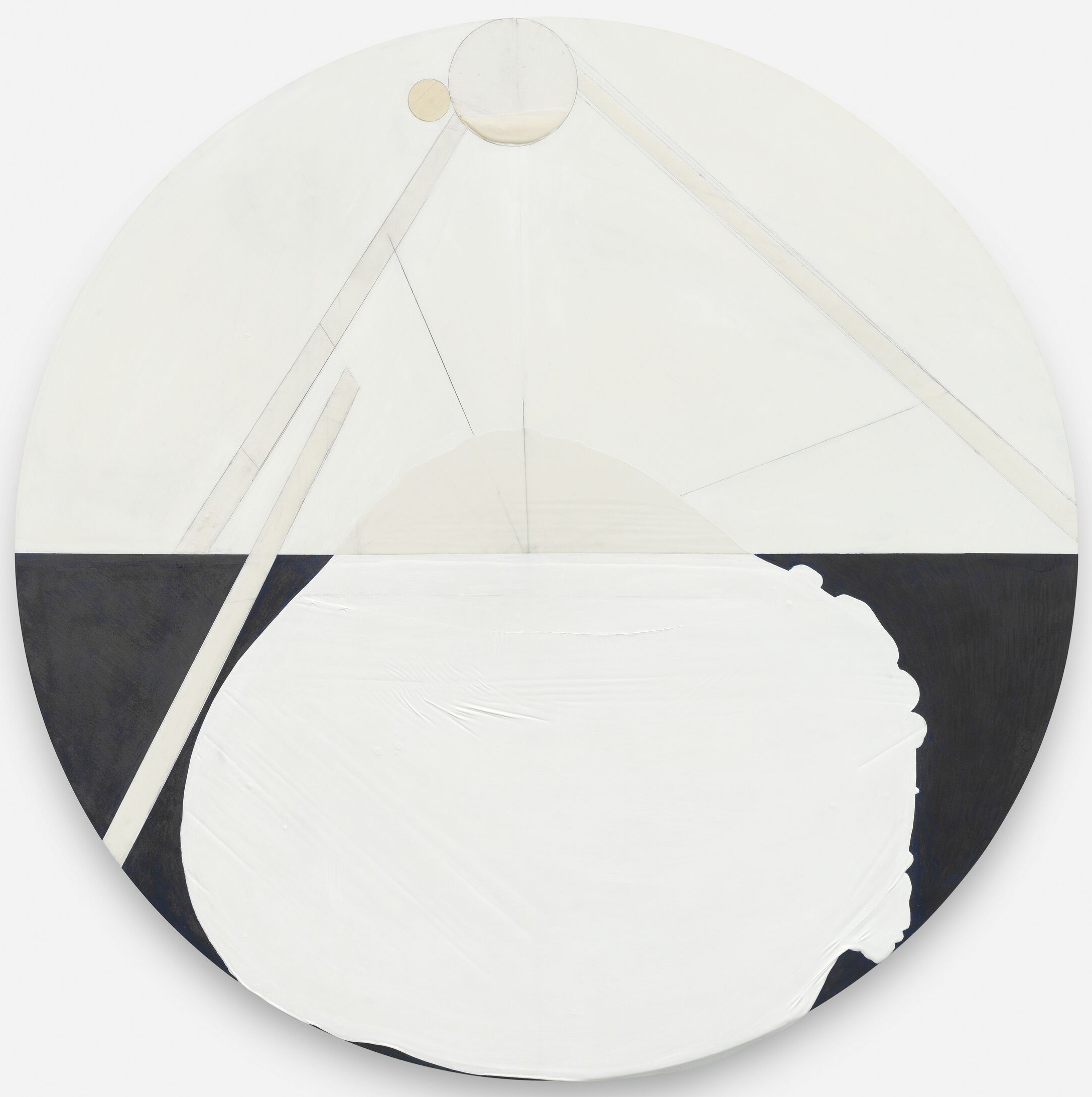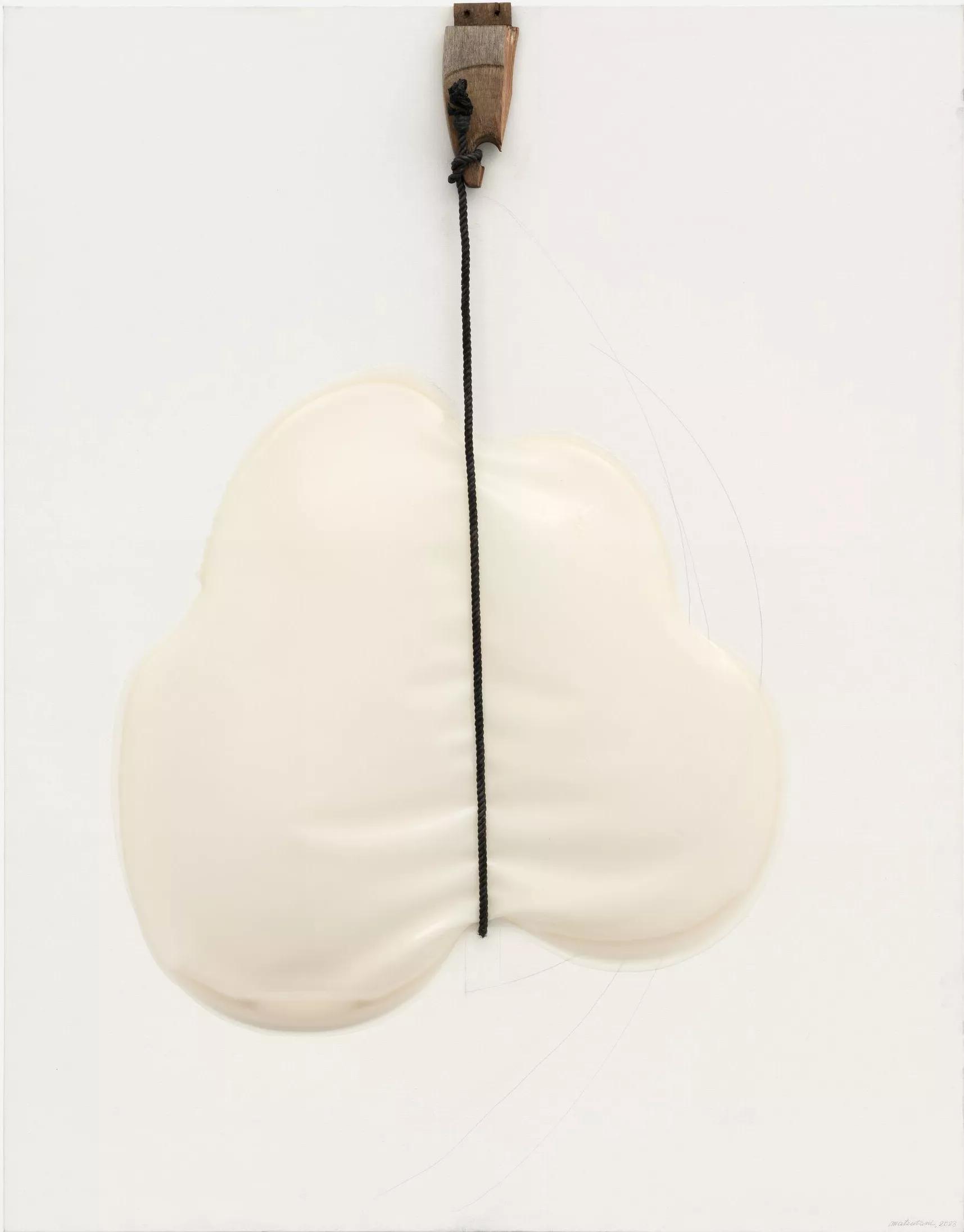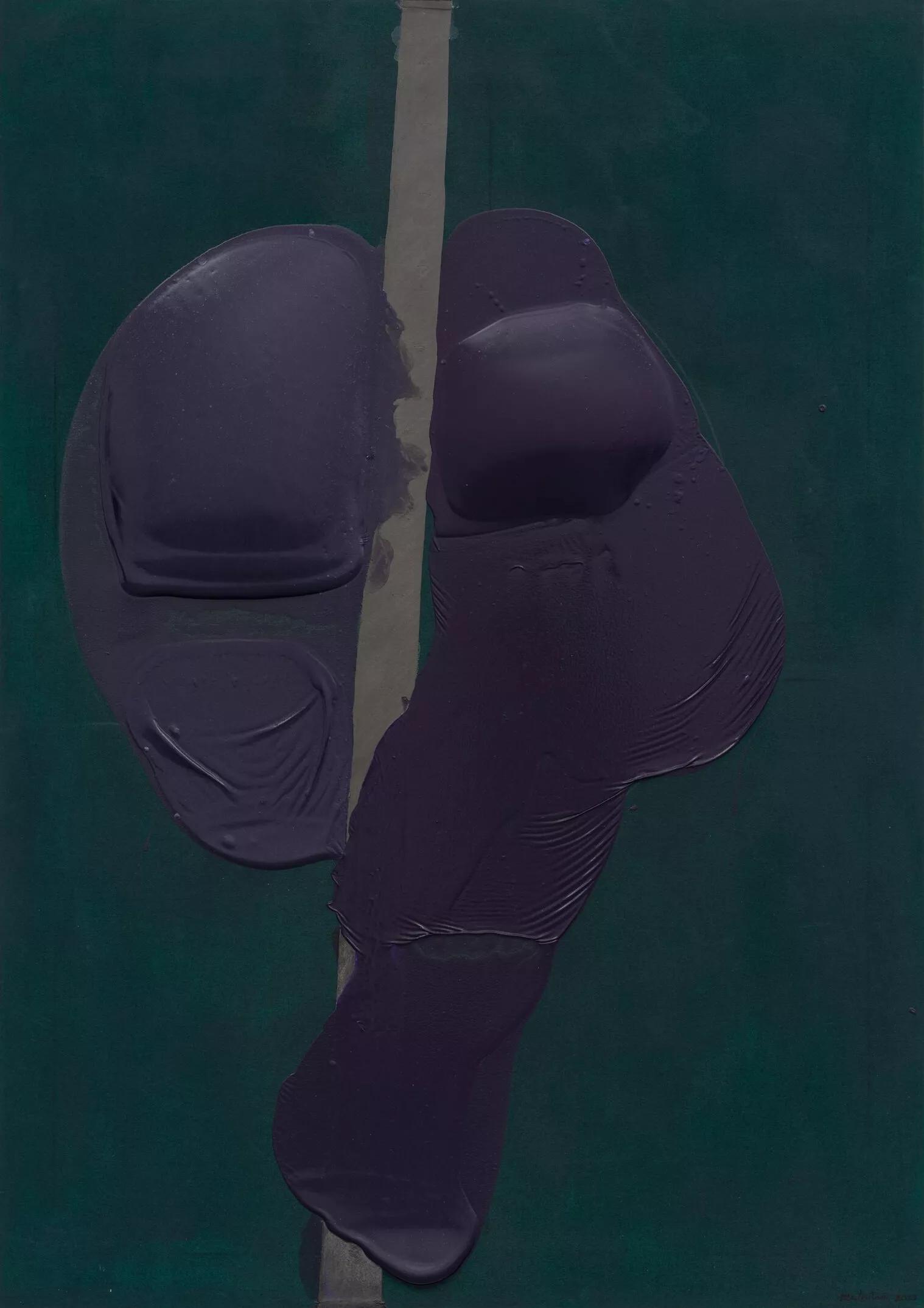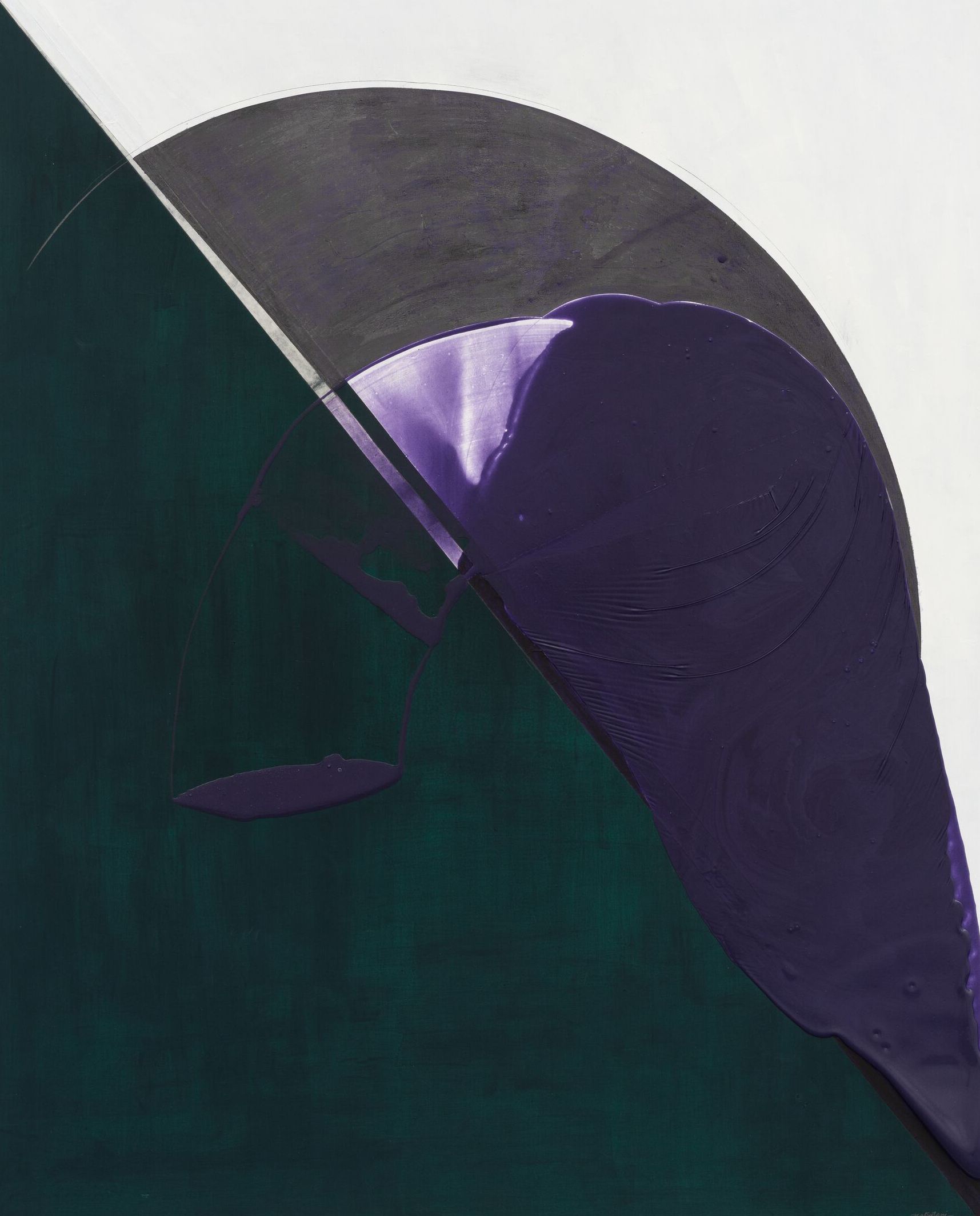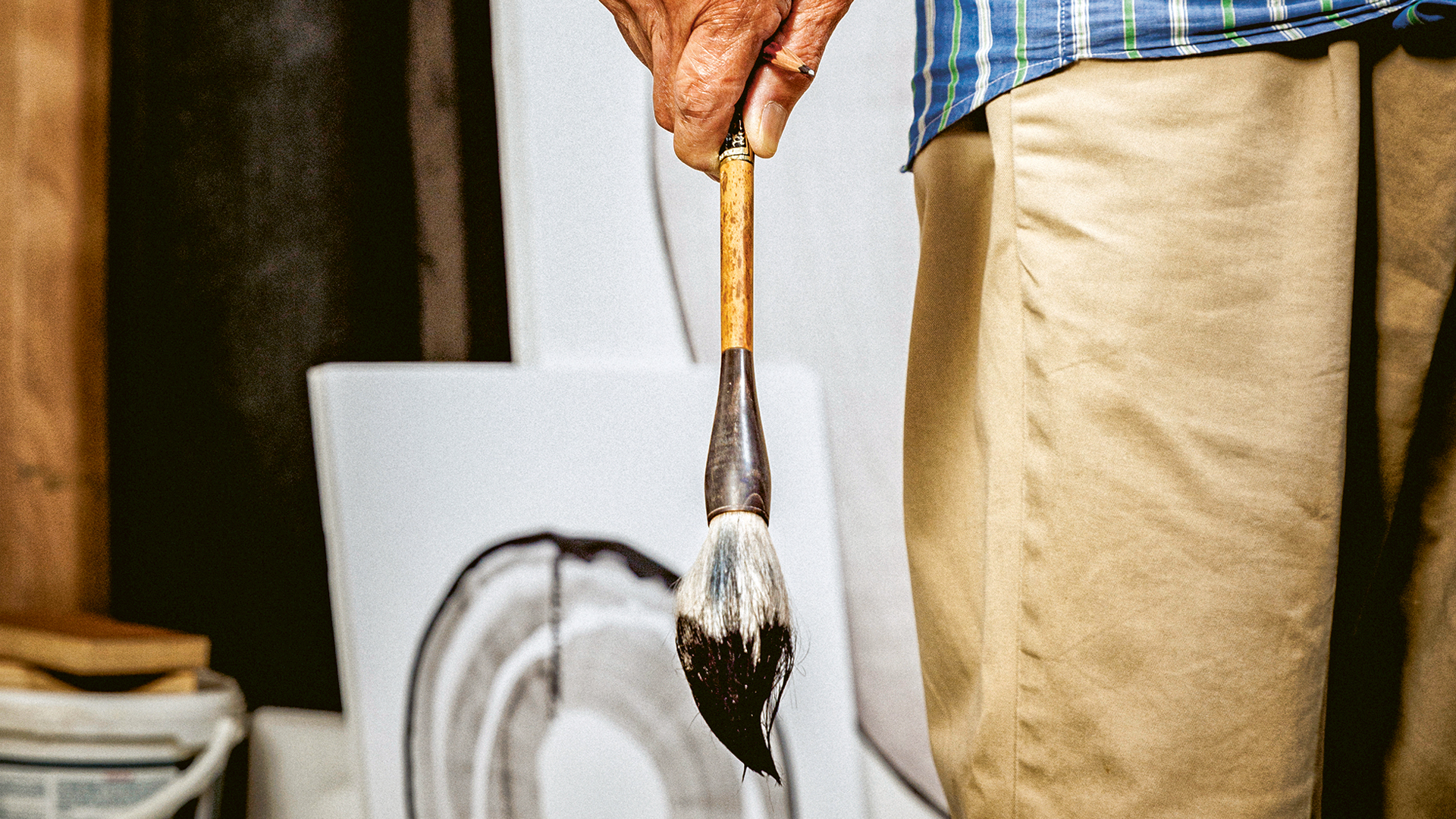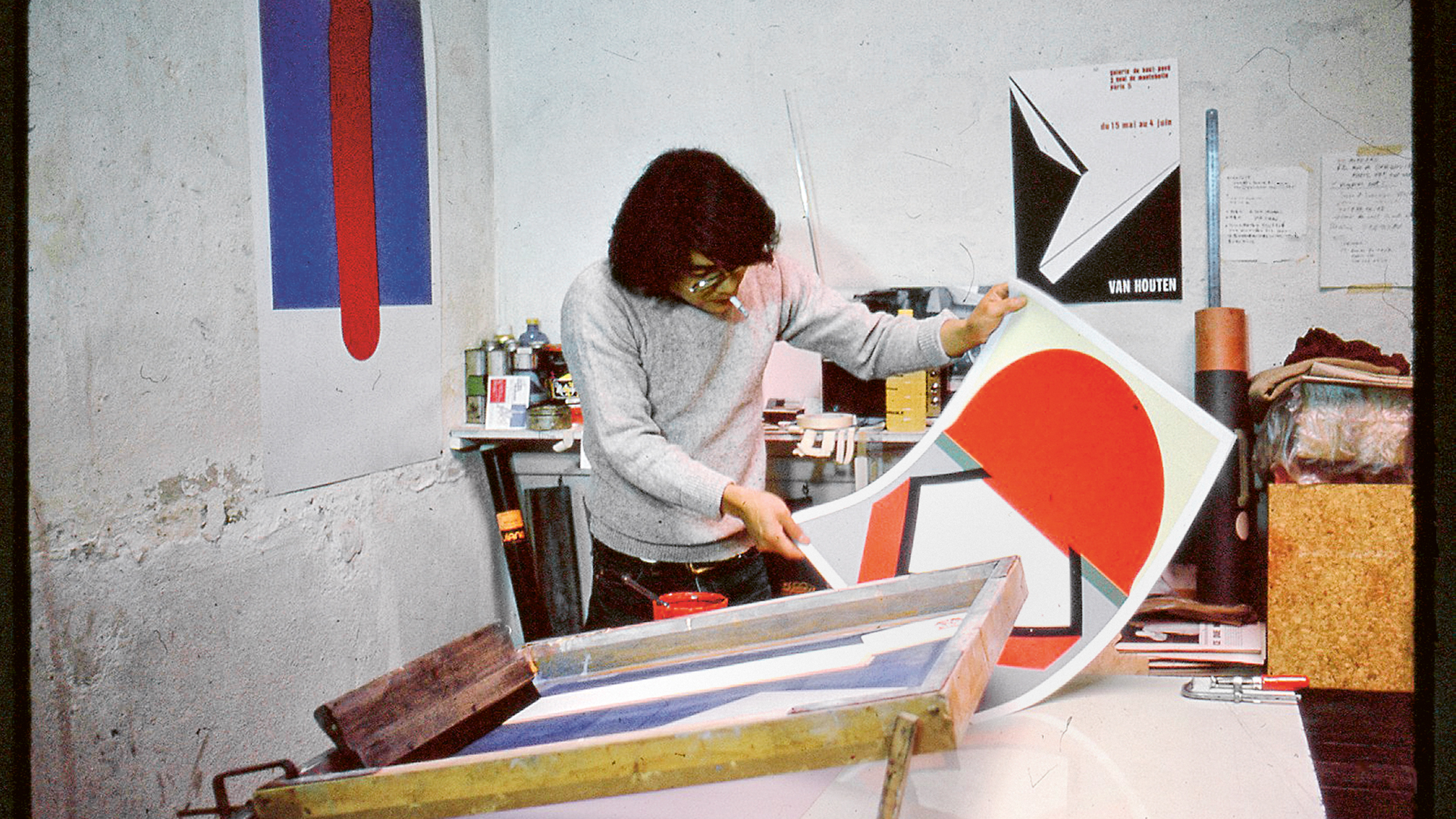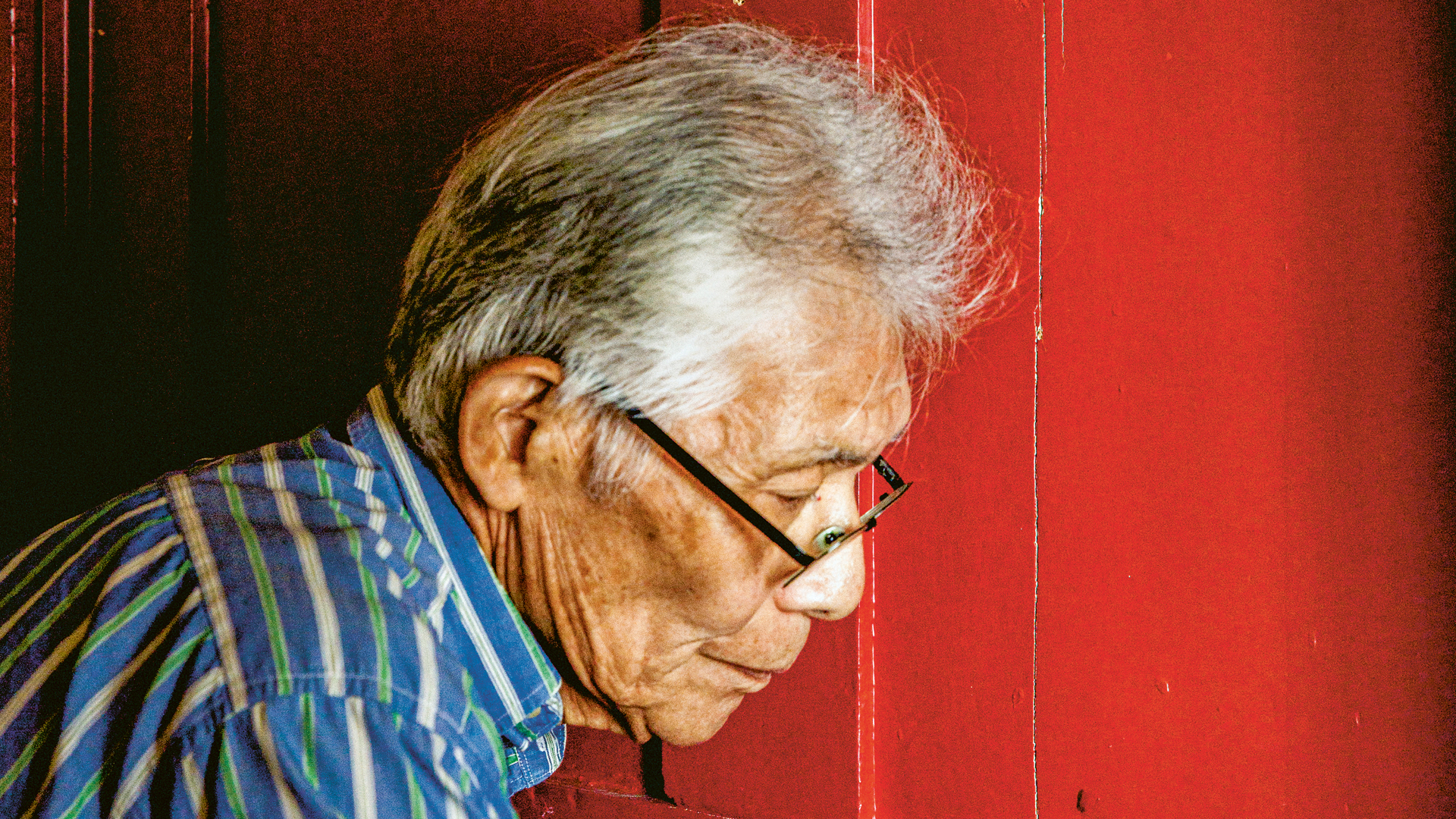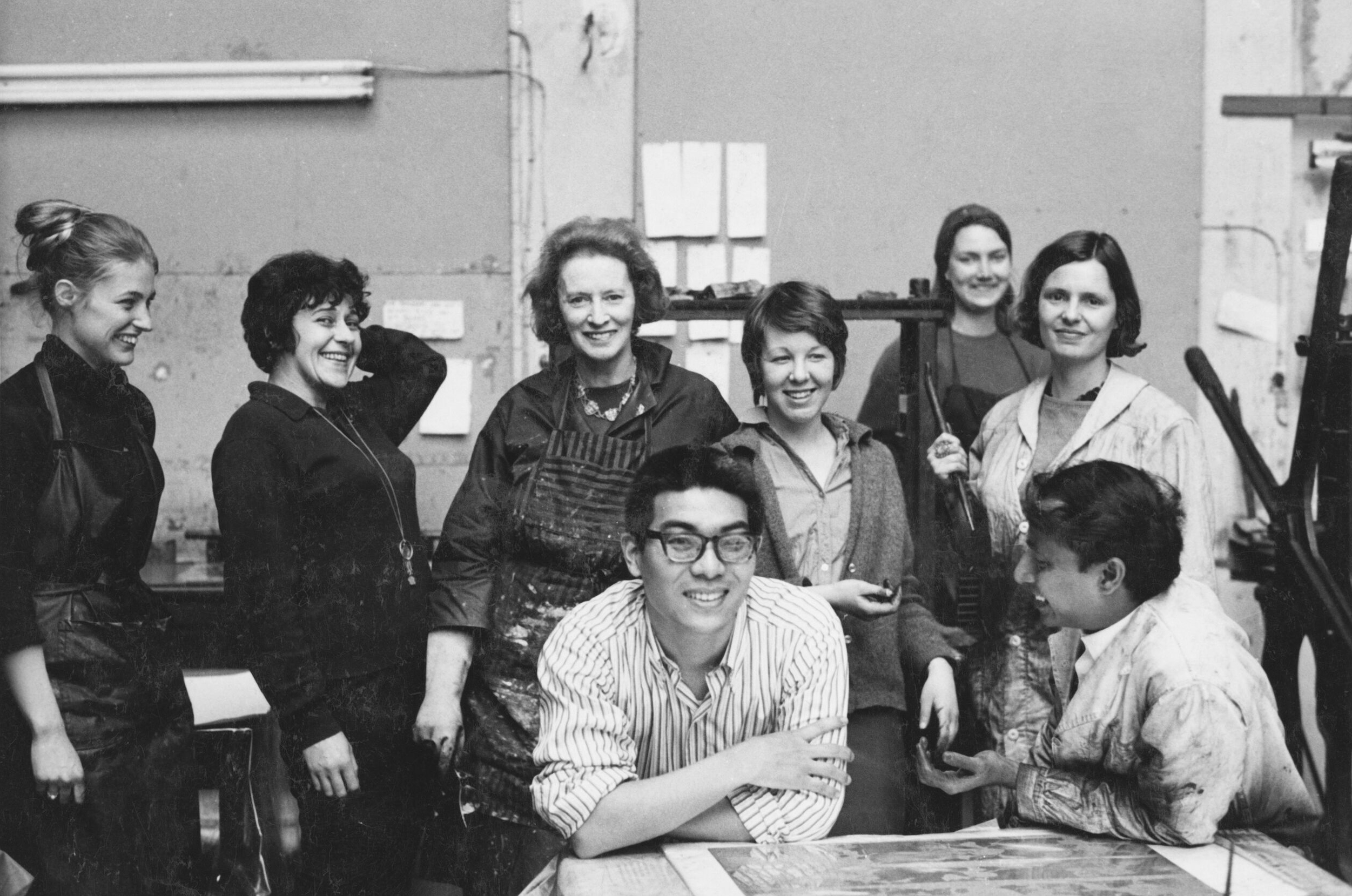Matsutani
6 April – 18 May 2024
Paris
Featuring a selection of new works in direct response to the space alongside rare historic pieces, this exhibition showcases the breadth of Takesada Matsutani’s career and development of his masterful artistic practice.
Takesada Matsutani, the Ōsaka-born artist who has lived and worked in Paris for the past 60 years, has developed a unique visual language of form and material over five decades, and at the age of 87 maintains an energetic daily studio practice. This exhibition at our Paris gallery, organized with Olivier Renaud-Clement, features a selection of new works in direct response to the space, a highlight of which includes a major site-specific window installation, alongside rare historic pieces by the artist from his time in the Gutai group.
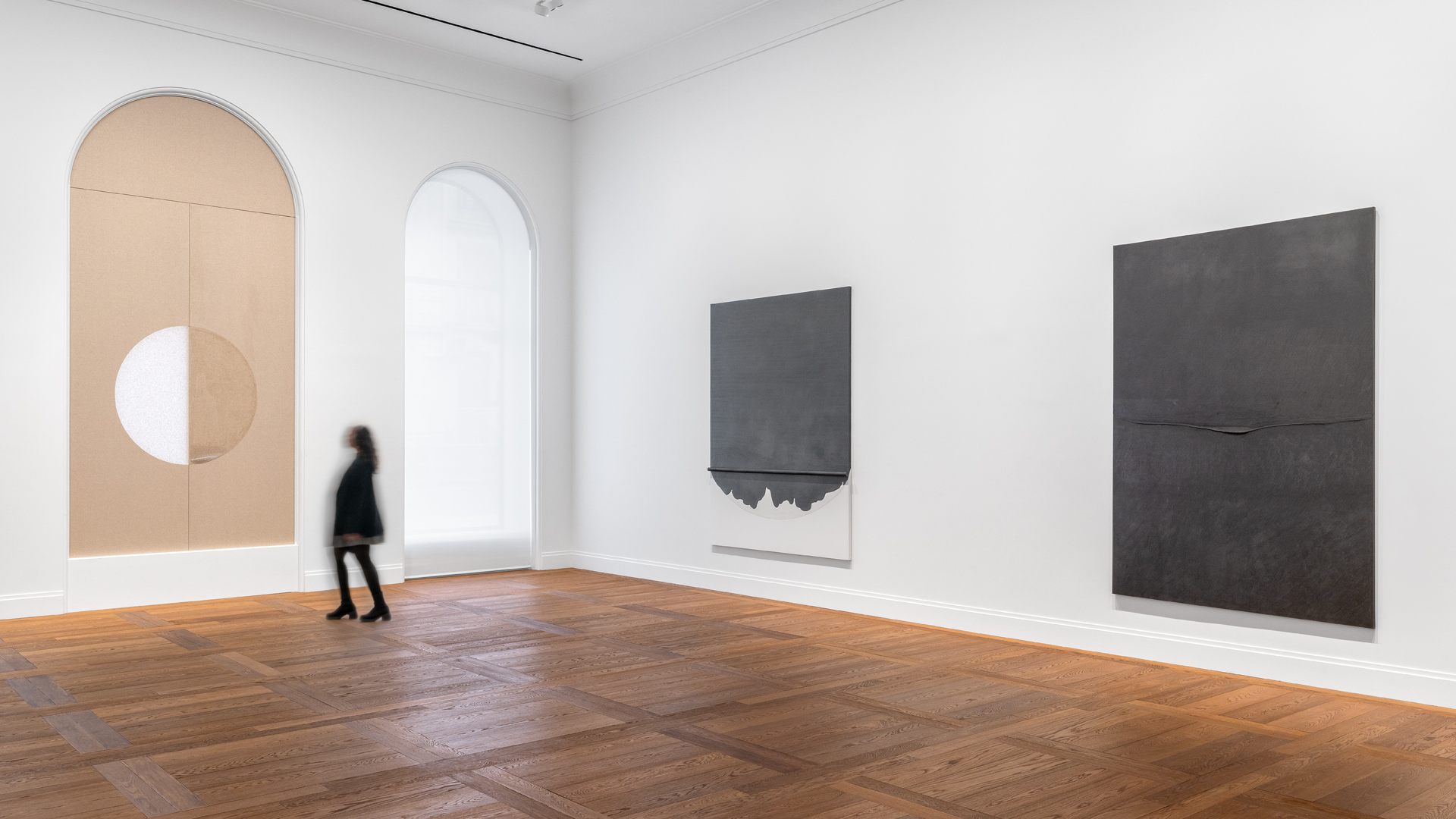
From the early 1960s until the 1970s, Matsutani was a key member of the influential post-war Japanese art collective, the Gutai Art Association. As part of the group, Matsutani experimented with vinyl glue by manipulating the substance to create bulbous and sensuous forms reminiscent of human curves and features. By applying glue to the canvas, letting it partially dry to form a skin and then inflating it with his own breath using a straw or hairdryers and fans, Matsutani brings the material to life.
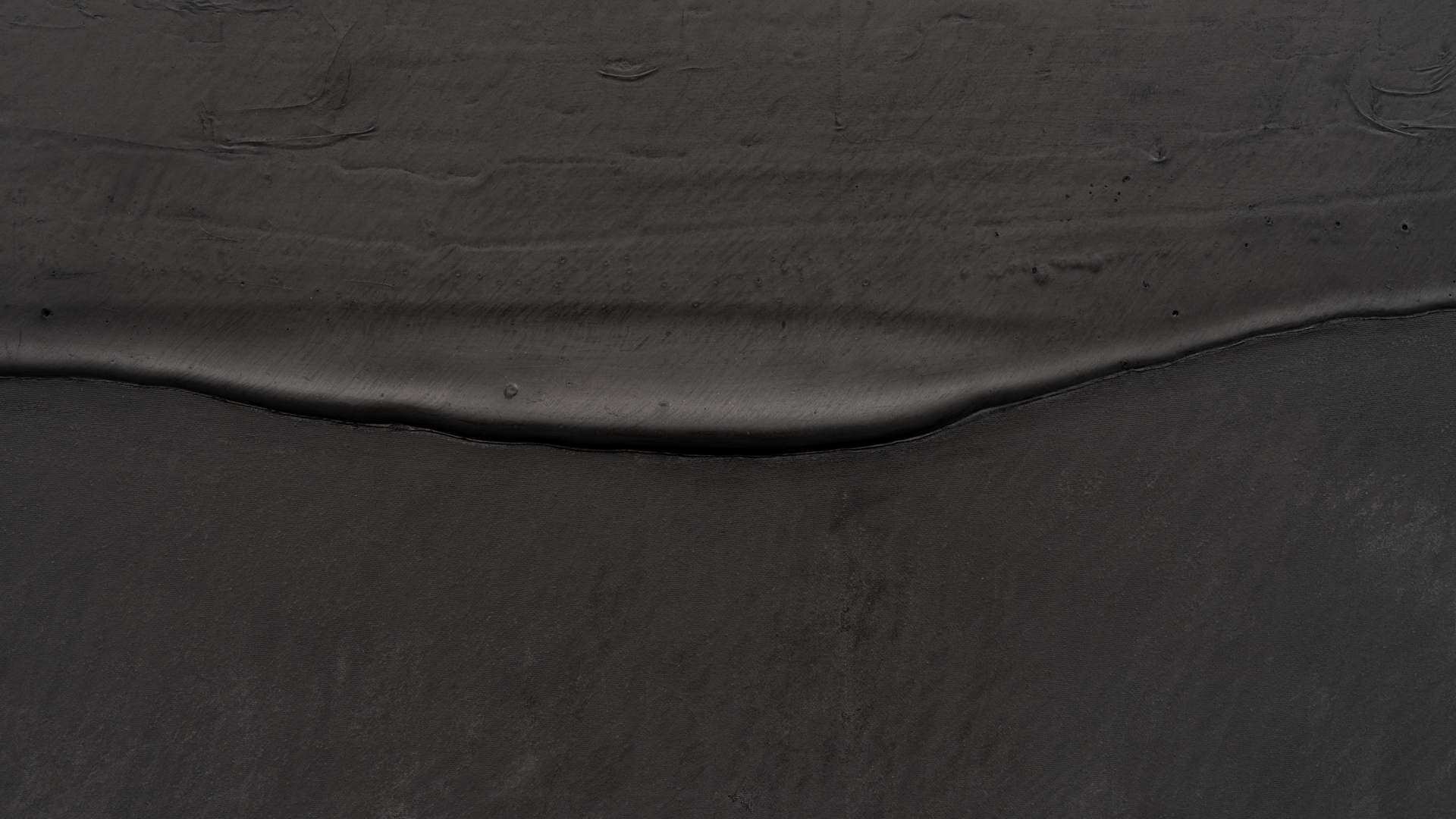
After the Gutai group disbanded in 1972, Matsutani eased into a radical yet consistent new body of work, informed by his experience at Stanley William Hayter’s renowned printmaking studio, Atelier 17. Faithful to his Gutai roots, he strove to identify and convey the essential character of vinyl glue with graphite, which were to become his signature materials. The artist began creating works composed of vast expanses of metallic black graphite on mural-size sheets of paper built up with painstaking individual strokes, the ritualized manner presenting a time-based record of his gestures.
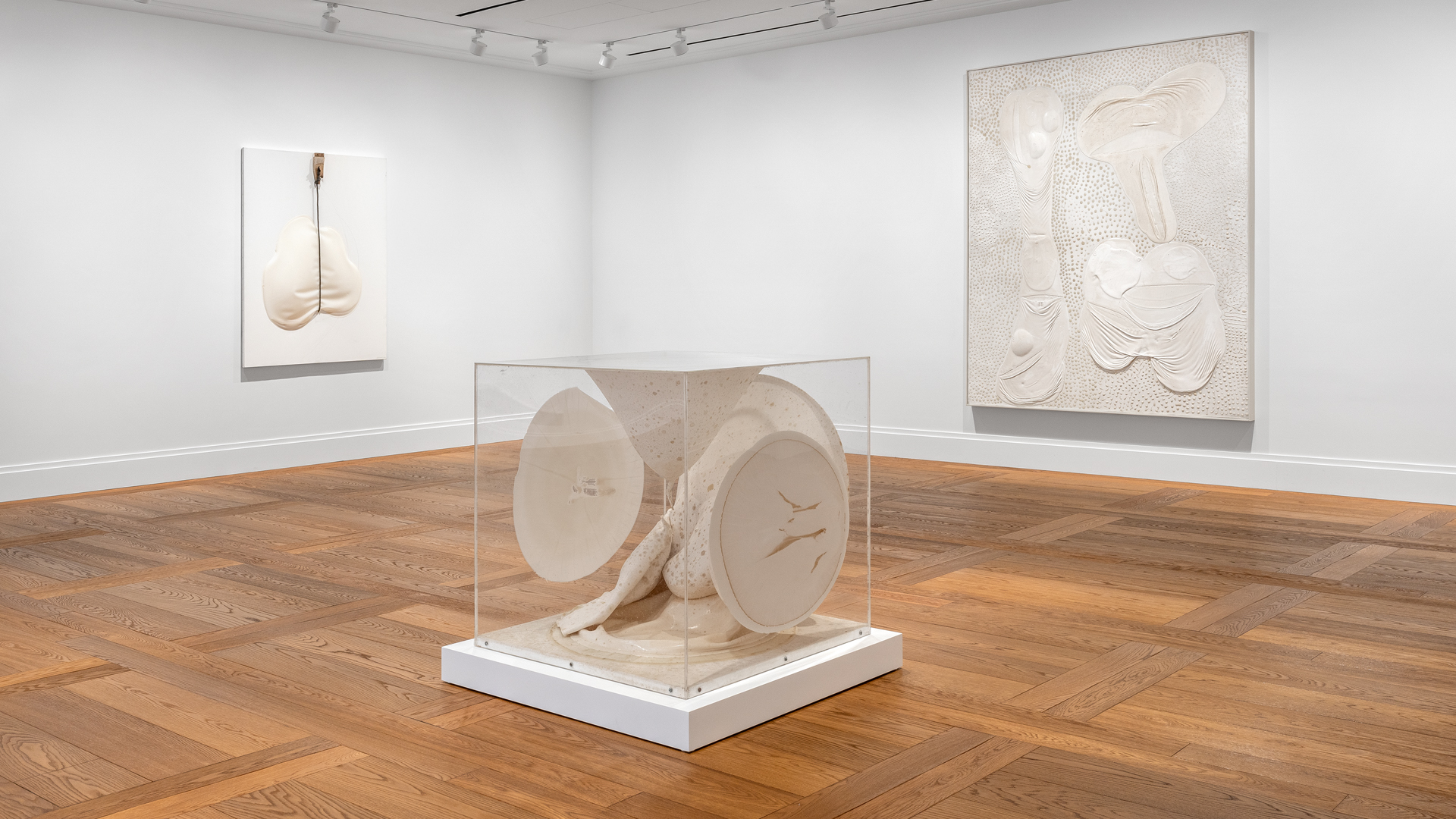
On display is a work from the artist’s Wave series from the late 1990s, in which the artist’s application of layers of graphite enabled him to experiment with the material’s essential character and expressive possibilities. Matsutani continues to use this technique in his daily studio practice, exemplified in new works on show including ‘Knoll’ (2023) and ‘Purple 8-4-2023’ (2023), employing deep and dark greens and purples in a departure from his monochromatic color palette.
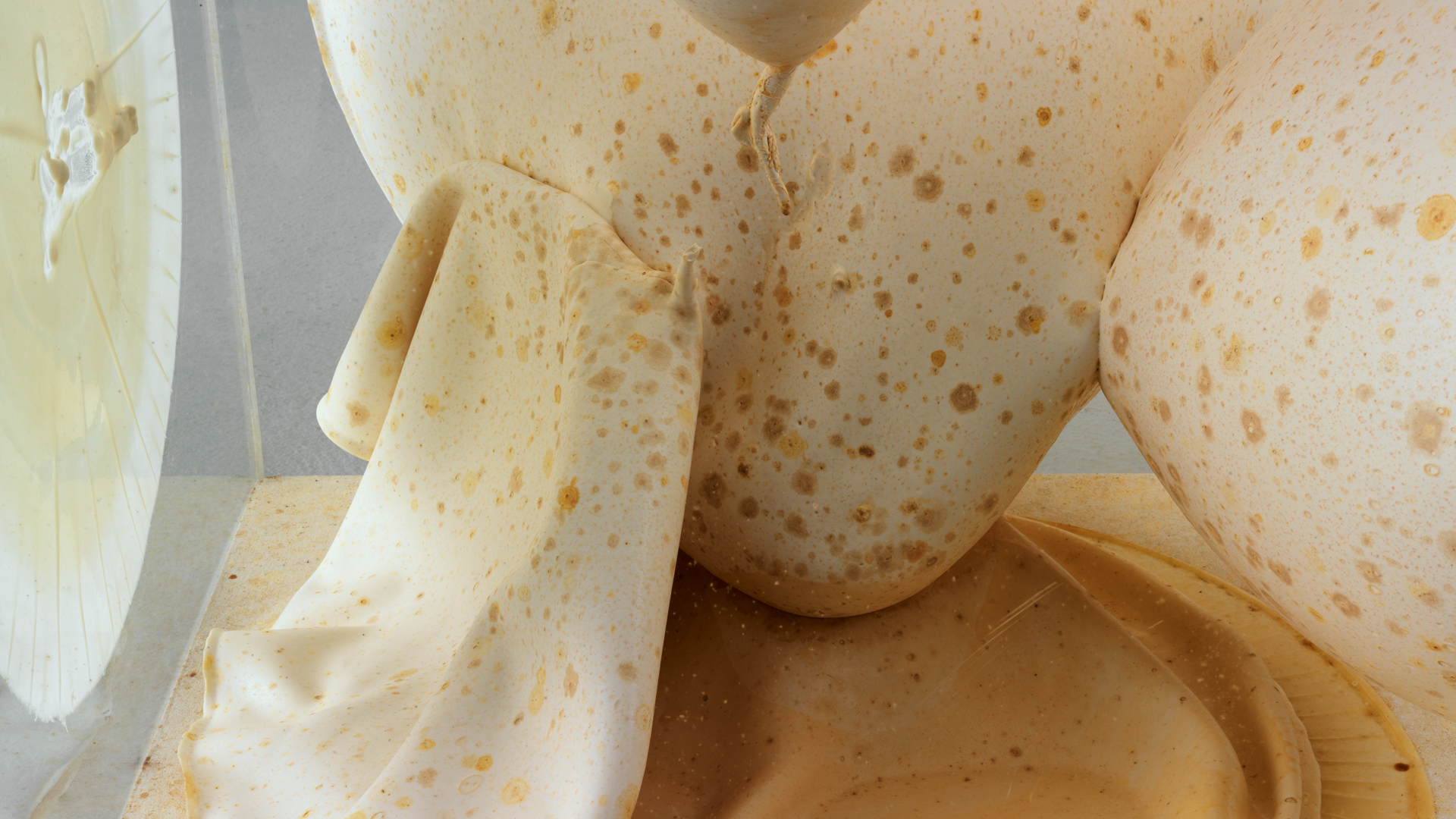
Matsutani has created a site-specific installation in direct dialogue with the windows of the ground floor gallery space, in which the large-scale constructed canvas creates a delicate interplay with the light coming in. Through his ongoing series of installations, Matsutani has remained faithful to his past, while also revisiting his country’s traditions and finding a radical way to break with artistic conventions.
‘The idea was something three dimensional, on the canvas. An organic kind of shape.’—Takesada Matsutani
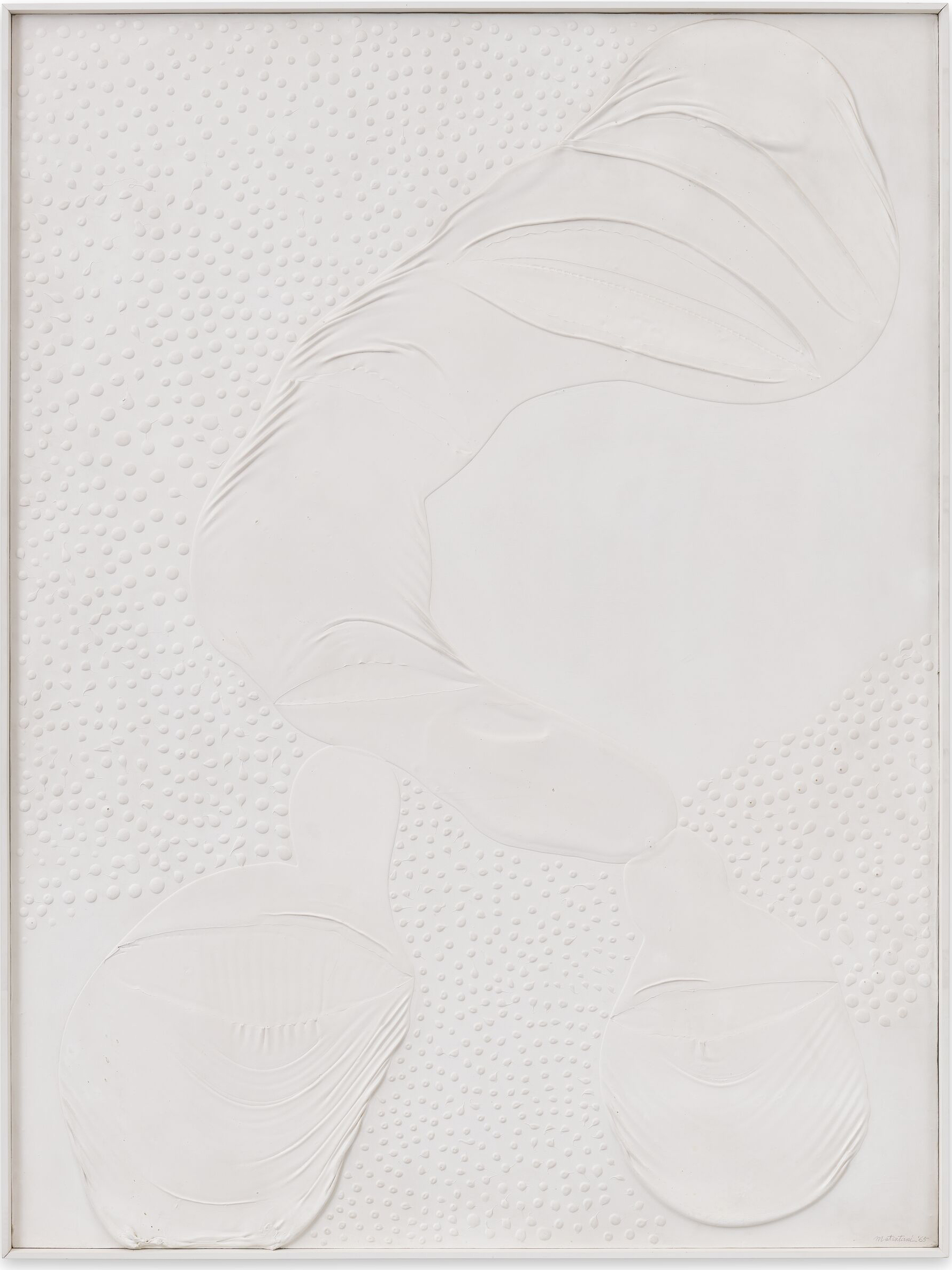
Work 65-W
1965

Matsutani’s early experimentation is exemplified in two rare works made by the artist in 1965, ‘Work 65-W’ and ‘Work 65-D,’ where tactile forms on the painterly surface evoke deflated balloons as well as bodily associations. ‘Plexiglas Box’ (1966) builds on this technique, not on canvas as we have come to expect, but in three dimensions, a unique example of his experimentations with object-based sculpture. In this work, the artist attached a bulbous form to five interior sides of the clear cube, letting the delicate swollen glue compress and combine in the center. Contained within Plexiglas, Matsutani’s skin-like round bulges brings together a play of opposites—hard and soft, transparent and opaque, organic and geometric.
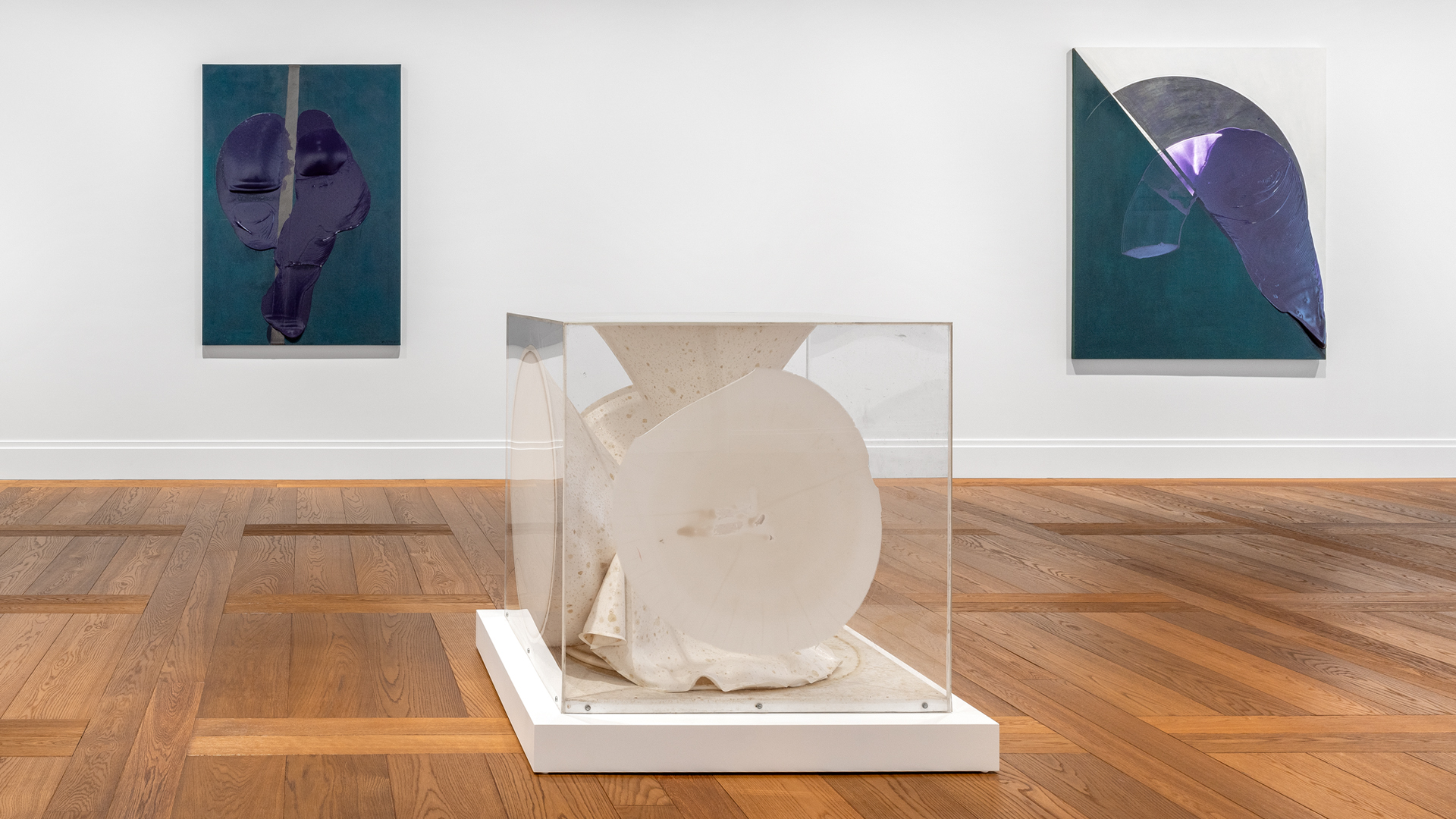
Matsutani has continued to be inspired by the tactility of vinyl glue; though today, his method places more emphasis on the meditative and methodical. Feeling a profound affinity with Zen philosophy, Matsutani attempts to stop time, to materialize a suspended moment and to acknowledge the repetition and fluidity of everyday life through his multifaceted practice. These ideas are personified in the new work ‘Suspend’ (2023), which sees one of the artist’s distinctive amorphous vinyl bubble forms hanging from a cord on the canvas, held up by a wooden mechanism. In combining this continuous introspection with a fearless experimentation, Matsutani transgresses the very idea of painting.
Takesada Matsutani’s Paris
In ‘Life to Matter’—the cover story of Ursula Issue 9—Takesada Matsutani and Kate Van Houten recall their early days as artists in Paris, with Desirée Moorhead-Hayter, Olivier Renaud-Clément and Anders Bergstrom

Prix Matsutani
The Prix Matsutani, an initiative from the Shoen endowment fund, was founded in 2016 by artists Takesada Matsutani and Kate Van Houten with a goal of supporting artists and their work. The winner of the Matsutani Prize 2023 is Samta Benyahia, who was awarded 15,000€, alongside Claudie Titty Dimbeng who was awarded the Prix d’Achat, a further acquisition prize of 5,000€. Their work will be displayed at L’Institut national d’histoire de l’art (INHA) alongside other nominated artists chosen by Alicia Knock, chief curator in the Contemporary Creation and Prospective Department at Centre Pompidou, from 7 March – 18 May 2024.
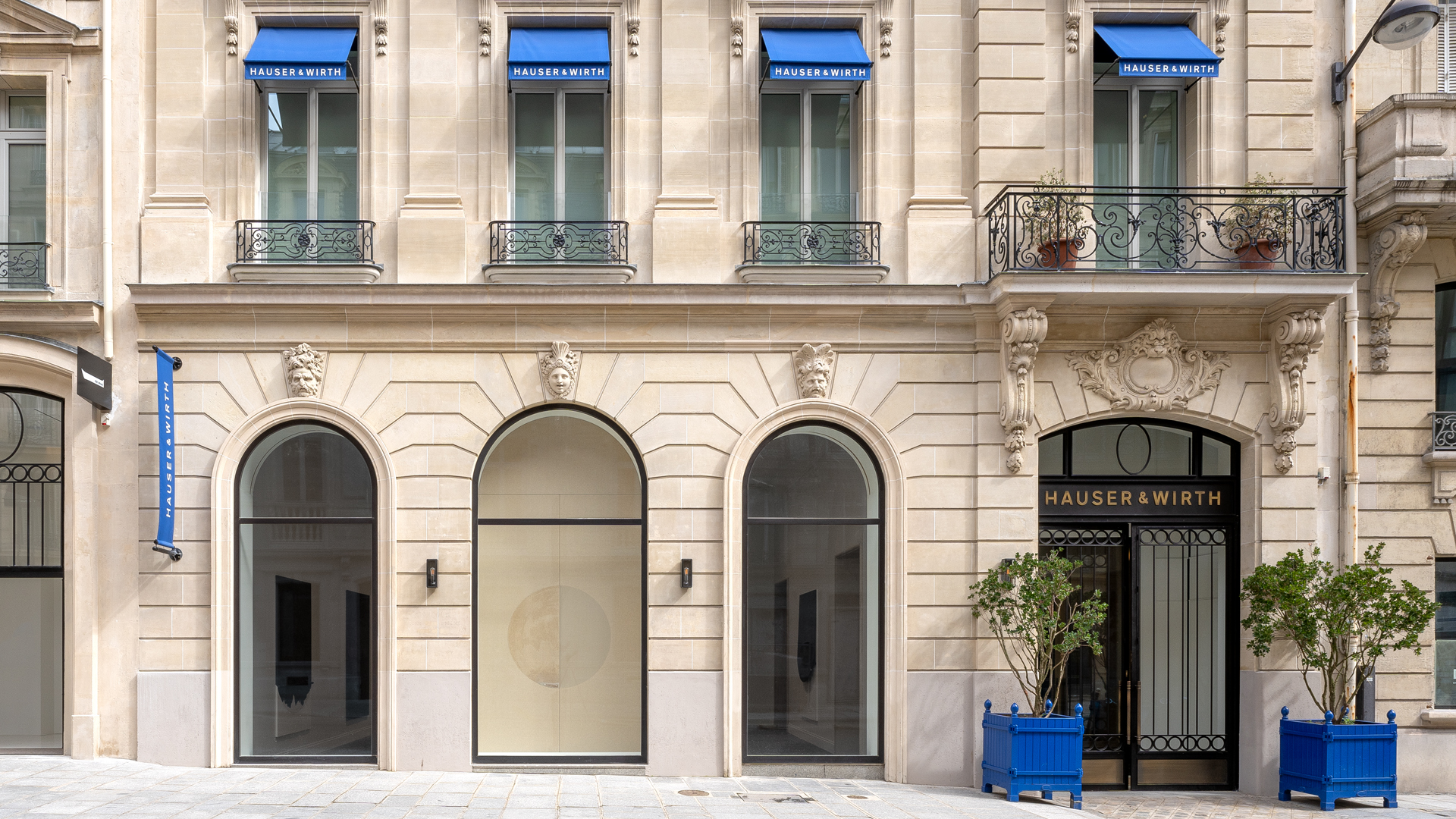
On view in Paris
The gallery is open Tue – Sat, 10 am – 6 pm. Please visit our location page to plan your visit.
About the Artist
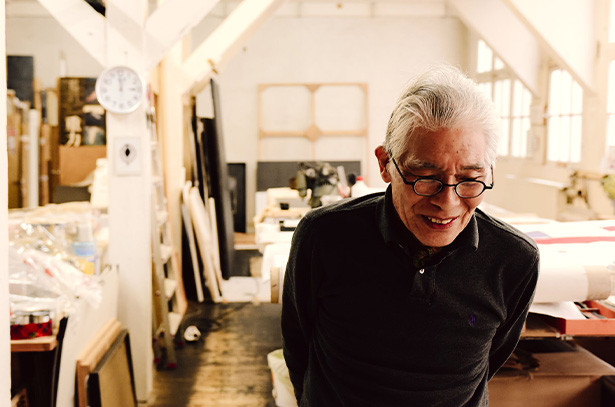
Takesada Matsutani
From the early 1960s until the 1970s Matsutani was a key member of the of the influential post war Japanese art collective, the Gutai Art Association. Over six decades Matsutani has developed a unique visual language of form and materials. As part of the Gutai group, Matsutani experimented with vinyl glue, using fans and his own breath to manipulate the substance, creating bulbous and sensuous forms reminiscent of human curves and features.
In 1966, Matsutani received a grant from the French government after winning first prize in the 1st Mainichi Art Competition and subsequently moved to Paris where he began working at Stanley William Hayter's renowned printmaking studio, Atelier 17. During the four years he worked at the studio, he learnt French, married and established his base in Paris. Working alongside Hayter opened Matsutani up to a new form of artistic experimentation and offered him a newfound confidence. Matsutani began to rethink his practice and a new elemental aesthetic language began to emerge that was both controlled and organic.
After the Gutai group disbanded in 1972, Matsutani eased into a radical yet consistent new body of work, informed by his experience at Atelier 17. Faithful to his Gutai roots, he strove to identify and convey the essential character of vinyl glue with graphite, that were to become his signature materials. Matsutani began creating vast expanses of metallic black graphite on mural-size sheets of paper built up with painstaking individual strokes. This ritualized manner presents a time-based record of his gestures, while reminiscent of his artistic beginnings in Japan, it has been translated into an artistic language that is uniquely his own.
Inquire about other available works by Takesada Matsutani
Related Content
Current Exhibitions
1 / 12

